Dry fruits are an ideal snack choice for people of all ages. They are easy to take along when traveling, easy to carry to work, and kids love them too.
There are different types of dry fruits available in the market that comes in different shapes and sizes and often come with flavors and aromas that will delight all of your senses, and it’s possible that you aren’t familiar with all of them.
If you are looking for a healthy diet, then you should definitely include a variety of dry fruits in your diet.
In this post, I will be sharing a list of dry fruits name that you can include in your diet.
What are dry fruits?
Dry fruits are dehydrated fruits that have been eaten for centuries in India and other countries for their nutritional value and various health benefits, including weight loss.
Also read: 8 High Fat, Nutritious Dry Fruits to Increase Your Weight
They’re a great way to improve the flavour of your food, satisfy your hunger in between meals, and provide your body with the nutrients it needs to function properly. You can use them to start your day with a nutritious breakfast, as a snack, or even as a dessert.
Majority of people eat them raw and they are high in fat, protein, iron, zinc, copper, calcium, antioxidants and other essential nutrients.
Dry fruits such as almonds, cashews, pistachios, etc., are often used for making desserts such as halwa and puddings.
20+ List of dry fruits name
Although, there are more than 50 different types of dry fruits in the market, I have gather only the most common one. These dry fruits are widely available in local stores, on the internet, and they are simple to incorporate into your diet.
Almond (Badam)
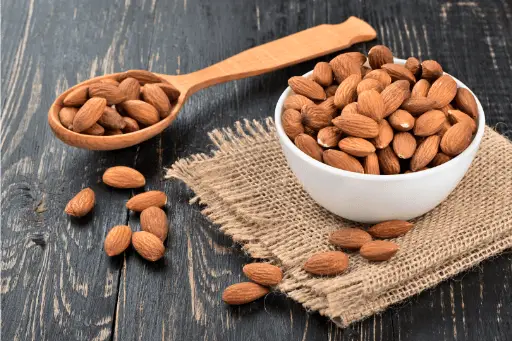
When it comes to the dry fruits name list, the first name which comes to the mind is almonds. These are some of the healthiest and delicious nuts available in the market. Along with being delicious, almonds have been used as a food and as a flavoring for centuries. They are high in protein, fiber, vitamins, and minerals.
Nutrition value:
| Nutrients | Quantity(30gm) |
|---|---|
| Calories | 173 |
| Fiber | 4g |
| Calcium | 80mg |
| Magnesium | 80mg |
| Iron | 1.1mg |
| Protein | 6g |
| Potassium | 220mg |
| Copper | 0.3mg |
Benefits of almonds:
- Lower your cholesterol.
- Lower your risk of heart diseases.
- Good for brain memory.
- Prevents weight gain.
- Manage blood pressure levels.
Anise
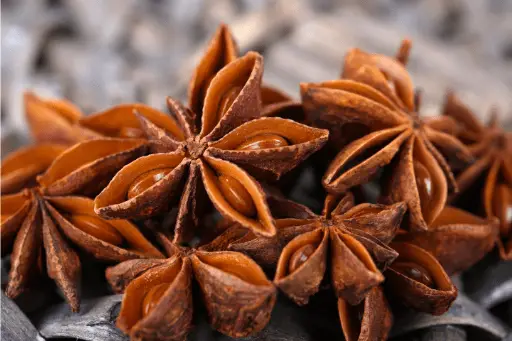
Anise is another name for sweet anise or aniseed, a flavor used in many types of food, especially sweets. It is also used to flavor many different alcoholic and non-alcoholic drinks, candies, cookies, cakes, etc.
It is also sometimes used as a natural remedy for things like indigestion and flatulence.
Nutrition value:
| Nutrients | Quantity(100g) |
|---|---|
| Calories | 335 |
| Fat | 15g |
| Cholesterol | 0mg |
| Sodium | 15mg |
| Potassium | 1450mg |
| Protein | 20g |
Benefits of anise:
- May reduce the depression
- Protect against stomach ulcers
- Balance blood sugar levels
- Reduce inflammation
Anjeer
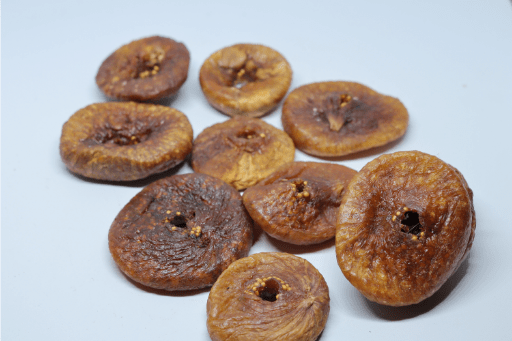
Anjeer is a type of dry fruit made from anjeer date and is well known name in the dry fruits market, especially in India. It is a very healthy food option that can be consumed on a daily basis. It’s not only good for your health but also helps in weight reduction.
Also read: 8 Amazing Benefits of Anjeer you never got to know
Nutrition value:
| Nutrients | Quantity(100g) |
|---|---|
| Calories | 74 |
| Fat | 0.3g |
| Cholesterol | 0mg |
| Sodium | 1mg |
| Potassium | 232mg |
| Carbohydrates | 19g |
| Protein | 0.8g |
Benefits of anjeer:
- Promotes weight loss
- Boost energy levels
- Strengthen bones
- Promotes healthy heart
Dried Apricot (Khumani)
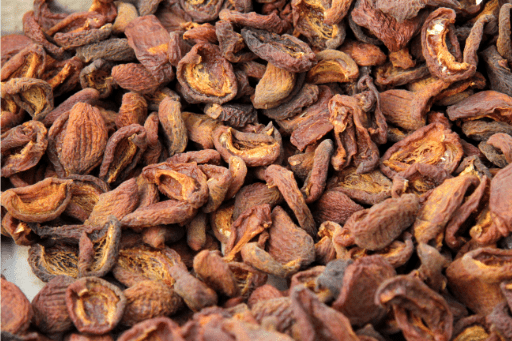
Dried apricots are wonderful dry fruits that came from the fruit called Apricot. These fruits are believed to originated in china but are now grown in many countries. These are good source of potassium, fiber and often used in making jams, juices, pies, and other desserts.
Nutrition value:
| Nutrients | Quantity(100gm) |
|---|---|
| Calories | 241 |
| Fat | 0.5g |
| Sodium | 10mg |
| Potassium | 1162mg |
| Carbohydrates | 63g |
| Protein | 3.4g |
| Fiber | 7g |
Benefits of apricot:
- Promote eye and skin health
- Protects your liver
- Regulates blood pressure
Read More: 8 Health Benefits of Dried Apricots That Will Surprise You
Betel nut (Supari)

Betel nut is a seed fruit from a palm tree cultivated and grows in tropical climates in different parts of the world. They are wrapped in betel leaves with slaked lime, and the combination of the three is known as paan.
If you have been to India or other parts of the world, you’ve probably seen people chewing betel nuts with paan masala. The nuts are small and round, and you can recognize them by their bright red color.
Nutrition value:
| Nutrients | Quantity(100g) |
|---|---|
| Calories | 339 |
| Protein | 5.3g |
| Fat | 10.2g |
| Sodium | 76mg |
| Potassium | 450mg |
| Calcium | 400mg |
| Iron | 5mg |
Benefits betel nut:
- Increase stamina
- Improves digestion
- Prevents gum infection
Cashews (Kaju)
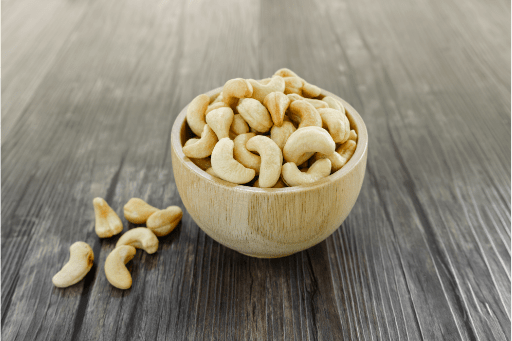
We can’t simply ignore cashews when it comes to the list of dry fruits name in the market. It is one of those dry fruits that is available in almost every kitchen.
Cashews nut grows inside a fruit, which is called a cashew apple. It’s an apple-like fruit that grows on trees in South America and the Caribbean’s tropical regions. While cashews are often roasted, they can also be eaten raw.
From being used in traditional Indian medicine to being incorporated into sweets and desserts, cashews offers a wide range of health benefits.
Nutrition value
| Nutrients | Quantity(100g) |
|---|---|
| Calories | 553 |
| Fat | 44g |
| Sodium | 12mg |
| Carbohydrate | 30g |
| Protein | 18g |
| Calcium | 37mg |
| Iron | 6.7mg |
Benefits of cashews:
- Lower your cholesterol
- Stroke prevention
- Manage diabetes
- Prevent heart diseases
Chestnut (Shaahabaloot)
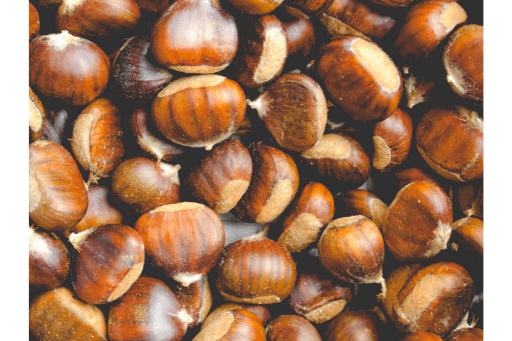
Chestnuts, a typical fruit of the traditional Chinese diet, are edible nuts with a high nutrition value. It’s a wonderful and high-quality dry fruit that contains a lot of helpful and healthy ingredients.
They are very popular for their sweet and crunchy taste and are widely used in desserts, bakery preparations, and other foods. These are an excellent snack that can be eaten any time of the day.
Nutrition value:
| Nutrients | Quantity(100g) |
|---|---|
| Calories | 247 |
| Fat | 2.2g |
| Cholesterol | 0mg |
| Sodium | 2mg |
| Potassium | 596mg |
| Carbohydrates | 52g |
Benefits of chest nut:
- Good for heart health
- Improve blood sugar control
- Reduces inflammation
- Anti-tumor properties
Dates (Khajoor)
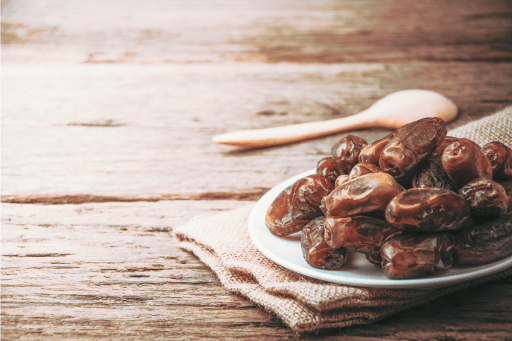
Dates are the ancient dry fruit of the date palm tree (Phoenix dactylifera), considered one of the oldest dry fruits known to humans. The tree is thought to have originated in North Africa and the Middle East and is now cultivated in many warmer regions around the world.
Dates are extremely sweet and beneficial; in fact, they are the sweetest of all the dried fruits.
Nutrition value:
| Nutrients | Quantity(100g) |
|---|---|
| Calories | 282 |
| Fat | 0.4g |
| Cholesterol | 0mg |
| Sodium | 2mg |
| Potassium | 656mg |
| Carbohydrates | 75g |
| Protein | 2.5g |
Benefits of dates:
- Good for heartburn
- Decreases the risk of colon cancer
- Reduce the risk of high blood pressure
- Lower cholesterol levels
Dry figs
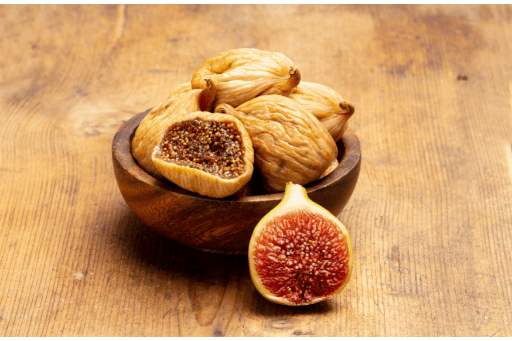
Dry figs are the dried version of figs and are a popular ingredient in various recipes, from cakes and cookies to main dishes and even salads. They’re also eaten as a snack or as a dessert.
They are rich in fiber, iron, calcium, magnesium, potassium, manganese, pectin, and folic acid. Figs are also rich in antioxidants, which are very useful in preventing cancer, heart disease, and Alzheimer’s disease.
Nutrition value:
| Nutrients | Quantity(100g) |
|---|---|
| Calories | 252 |
| Fat | 1g |
| Cholesterol | 0mg |
| Sodium | 10.1mg |
| Potassium | 684mg |
| Carbohydrates | 65g |
| Protein | 3.5g |
| Fiber | 9.5g |
Benefits of dry figs:
- Prevents the risk of cancer
- Reduces the risk of heart diseases
- Strengthen bones and teeth
- Manages blood pressure
Dry coconut (Copra)
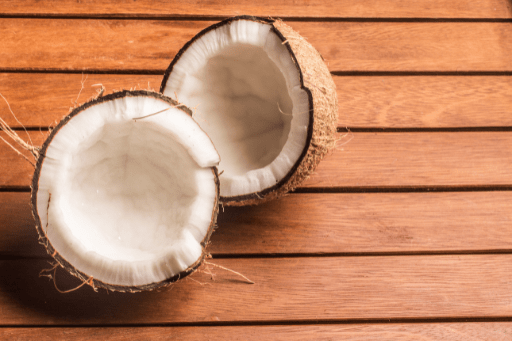
Dry coconut is a dehydrated version of the traditional coconut. It’s known by a variety of names, including Nariyal, Copra and desiccated coconut.
It’s a popular snack in Asia-Pacific and other parts of the world. Dry coconut is frequently used as a topping or filling in traditional Asian desserts, such as the well-known coconut rice or the popular rice cake, which are served on special occasions or during holidays.
It can be easily stored for long periods of time due to its low moisture content. As a result, it’s ideal for long-distance travel.
Nutrition value
| Nutrients | Quantity(100g) |
|---|---|
| Calories | 460 |
| Fat | 26g |
| Cholesterol | 0mg |
| Sodium | 290mg |
| Potassium | 368mg |
| Carbohydrates | 52g |
| Fiber | 10g |
Benefits of dry coconut:
- Good source of healthy fats.
- Good for the immune system.
- Improves brain function.
Flax seeds
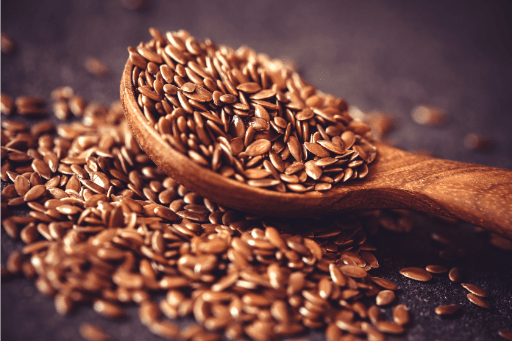
Flaxseed, also known as linseed, is a very common ingredient in food, being used in various products, including bread, muffins, cookies, and cereals.
These are one of the most concentrated plant sources of healthy omega-3 fatty acids and an excellent dietary fiber source.
These are grown in many countries, but mainly in Canada, China, and India.
Nutrition value:
| Nutrients | Quantity(100g) |
|---|---|
| Calories | 550 |
| Fat | 43g |
| Cholesterol | 0mg |
| Fiber | 28g |
| Potassium | 840mg |
| Protein | 19g |
Benefits of flax seeds:
- May reduce cancer risk
- Improve cholesterol
- Lower blood pressure
Hazelnuts
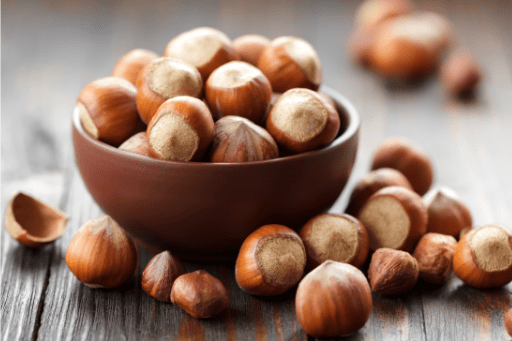
Hazelnuts are one of the delicious and largest among the nuts, and they grow on trees. These nuts are used in cooking, baking, confectionery, ice creams, breakfast cereals, sweets, chocolate, etc.
These nuts are also used in the production of cosmetics, medicines, and other goods. It can be eaten as it is or can be used to prepare different recipes.
Also read: Hazelnut vs Chestnut: Which Is The Most Nutritious Nut?
Nutrition value:
| Nutrients | Quantity(100g) |
|---|---|
| Calories | 640 |
| Fat | 63g |
| Cholesterol | 0mg |
| Sodium | 0g |
| Potassium | 749mg |
| Carbohydrates | 18g |
| Protein | 15g |
Benefits of hazelnuts:
- Protect against cell damage
- Improves sperm count in men
- Reduces the inflammation
- Lowers the cholesterol
Fox Nuts (Makhana)
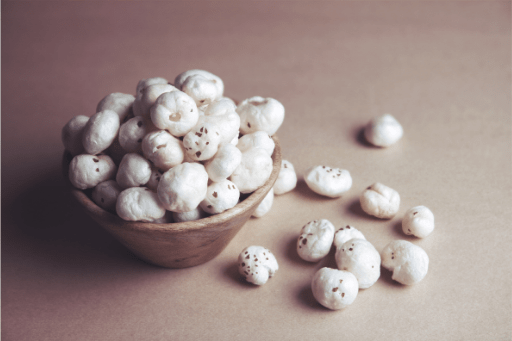
Makhana, also called fox nut, is one of India’s most popular and nutritious dry fruit. It is believed that the fox nut is the favorite food of Lord Shiva.
It can be consumed at any time of the day and is very good for your health. It’s also recommended for weight loss and is loaded with proteins, carbohydrates, vitamins, and minerals, making it very healthy.
Nutrition value:
| Nutrients | Quantity(100g) |
|---|---|
| Calories | 347 |
| Protein | 9.7g |
| Fat | 0.1g |
| Carbohydrates | 76.9g |
| Fiber | 14.5g |
| Iron | 1.4mg |
Benefits of makhana:
- Good for weight loss
- Helps to cleanse the body from toxins
- Reduces the cholesterol
- Helpful for diabetes patients
- Treat various kidney disorders
Also read: The Complete Guide to Makhana Nutrition, Side effects and Benefits
Dried Peach
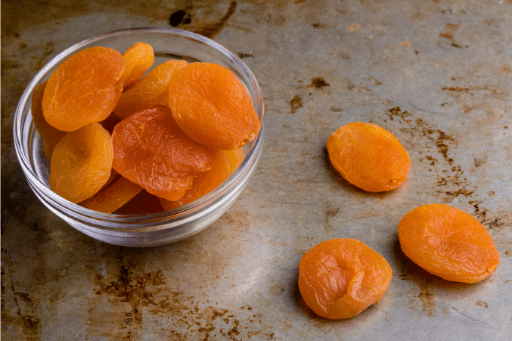
Dried peach are delicious and nutritious dried fruit used as a natural remedy for all skin ailments. It contains essential vitamins and minerals that help cure skin problems like acne and skin rashes and retain skin moisture.
It also helps to reduce the under-eye dark circles and brightens the skin.
Nutrition value:
| Nutrients | Quantity(100g) |
|---|---|
| Calories | 239 |
| Fat | 0.7g |
| Carbohydrates | 61.33g |
| Fiber | 8.2g |
| Sodium | 7mg |
| Potassium | 996mg |
Benefits of dried peach:
- Improves digestion
- Improve heart health
- Good for skin health
- Reduce allergy symptoms
Peanuts

Peanuts are not really nuts, but a type of legumes that grow underground. They grow in the same way as beans and peas and look almost the same. It can be harvested at any time of the year and can be found in nearly every country.
They look like small peas, and they grow inside a thin, papery shell that is usually removed before the peanuts are sold. These are pretty nutritious and are used in a variety of foods and recipes.
Nutrition value:
| Nutrients | Quantity(100g) |
|---|---|
| Calories | 578 |
| Fat | 50g |
| Cholesterol | 0mg |
| Sodium | 18mg |
| Carbohydrates | 16g |
| Protein | 26g |
Benefits of peanuts:
- Lower the risk of heart diseases
- Reduces the risk of cancer
- Lower cholesterol
- Maintain blood sugar levels
- Fights aging
Also read: Disadvantages of Peanuts: 6 Reasons to Limit Your Consumption
Pecan nuts
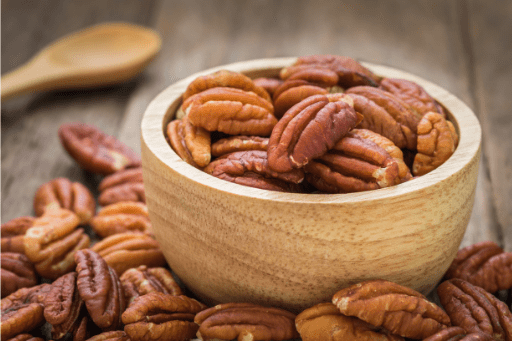
Pecan nuts are also known as “pecans,” are the edible seeds of the pecan tree. These nuts are a delicious snack to have between meals. These can be used in salads, yogurt, and oatmeal. Pecan nuts, like other nuts, are a great addition to a healthy diet when consumed in moderation.
Nutrition value:
| Nutrients | Quantity(100g) |
|---|---|
| Calories | 670 |
| Fat | 64g |
| Cholesterol | 0mg |
| Sodium | 0g |
| Potassium | 14g |
| Carbohydrates | 9.4g |
| Protein | 9g |
Benefits of pecan nuts:
- Lower blood pressure
- Good for a healthy heart
- Helps in improving digestion
- Boost immunity
- Anti-aging benefits
Pine nuts
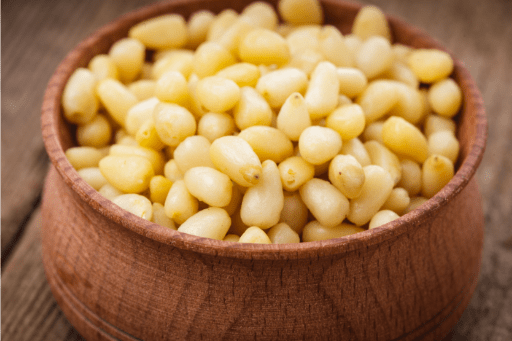
Pine nuts are actually not nuts but seeds from the pine tree that are available year-round. These are healthy snacks and a common ingredient in pesto sauce and can also be used as topping for salads.
These nuts have a sweet, nutty flavor that makes them a popular ingredient in many dishes.
They are rich in protein and minerals. Pines should be consumed in moderation because to their high calorie content. Raw is the most common way to eat them, but they can also be baked or roasted.
Nutrition value:
| Nutrients | Quantity(100g) |
|---|---|
| Calories | 687 |
| Fat | 68g |
| Sodium | 2.1mg |
| Potassium | 608mg |
| Carbohydrates | 13.3g |
| Protein | 14g |
Benefits of pine nuts:
- Good for brain health
- Keep your heart healthy
- Manage diabetes
Pistachios (Pista)
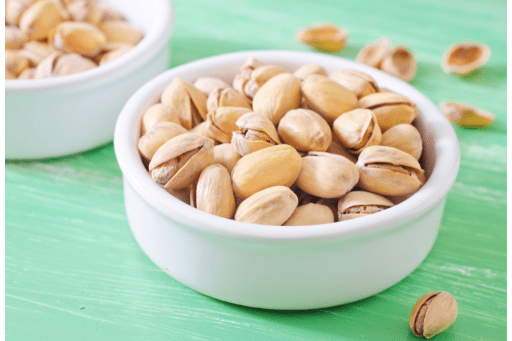
Pistachios, also referred to as pistachio nuts, are a delicious and nutritious dry fruit that comes from the fruit of the Pistacia vera plant. Pistachio trees typically grow 5-20 meters in height and can live for up to 200 years.
These are the perfect snack for athletes and those who needs more energy in their diet for their training and workouts.
Nutrition value:
| Nutrients | Quantity(100gm) |
|---|---|
| Calories | 562 |
| Fat | 46g |
| Carbohydrate | 27g |
| Fiber | 11g |
| Protein | 20g |
| Iron | 4mg |
| Calcium | 105mg |
Benefits of pistachios:
- Lower cardiovascular diseases
- Manages blood pressure
- Improve your blood vessels
Poppy seed (khas-khas)
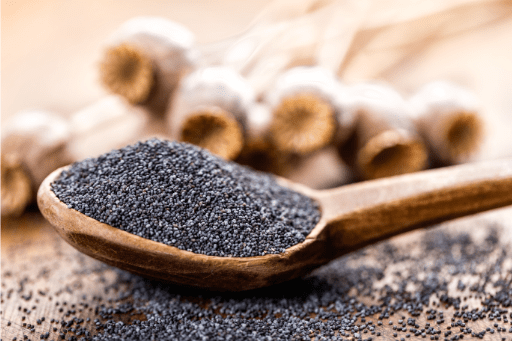
Poppy seeds are the edible seeds or dried fruit of the poppy plant. The seeds are somewhat spherical in shape, small, and are widely used in cooking and baking, especially in Central Europe. They are often used in traditional ingredients in cakes, pastries, and desserts.
Nutrition value:
| Nutrients | Quantity(100g) |
|---|---|
| Calories | 540 |
| Fat | 43g |
| Cholesterol | 0mg |
| Sodium | 26.3mg |
| Potassium | 720mg |
| Fiber | 19.8g |
| Protein | 18g |
Benefits of poppy seed:
- Good for bone health
- Helpful in pain-relieving
- May boost heart and skin health
- Improves digestion
Prunes
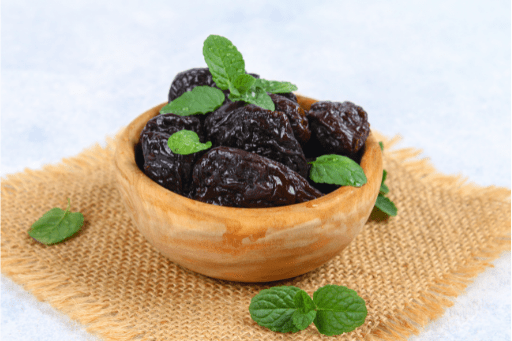
Prunes or dried plums are one of the most popular types of dry fruits. They’ve been around for a long time and are a favorite among many. They are, in fact, widely available in most stores and markets around the world.
Prunes are known for their sweet taste and are often used in desserts or eaten raw. They are also rich in natural sugar and known to be great for the digestive system.
Nutrition value:
| Nutrients | Quantity(100g) |
|---|---|
| Calories | 240 |
| Fat | 0.4g |
| Cholesterol | 0mg |
| Sodium | 2mg |
| Potassium | 732mg |
| Fiber | 7.1g |
| Protein | 2.2g |
Benefits of prunes:
- Improve digestion
- Reduces the cholesterol
- Prevent constipation
- Improve muscles health
Also read: 5 Amazing Benefits Of Prunes For Hair
Raisins (kismis)
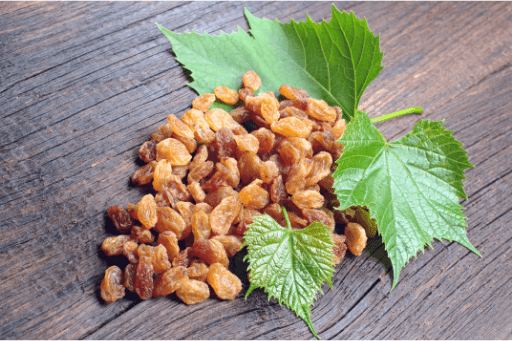
These are my favorite of all dry fruits!
Raisin is a dried grape often used in baking, cooking, and making wine. It is good source of fiber and can be a good snack for people trying to watch their weight.
They are also a good source of iron, potassium, and calcium. They are sweet because of the high sugar content and are often used to make popular Indian sweet “mithai.”
Raisins are available in a wide range of colors and sizes. They can be dark red, yellowish-orange, or pale red in color. The most common varieties include the black raisin, the golden raisin and the red raisin.
Nutrition value:
| Nutrients | Quantity(100gm) |
|---|---|
| Protein | 3.1g |
| Calories | 299 |
| Carbohydrates | 80g |
| Fat | 0.5g |
| Calcium | 50mg |
| Magnesium | 32mg |
| Potassium | 749mg |
| Fiber | 3.7g |
Benefits of raisins:
- Keep the blood sugar levels stable.
- Lower the heart disease.
- Improves dental health such as cavities and gum disease.
Also read: 6 Benefits of raisins for skin you didn’t know
Sesame seeds (Til ke beej)
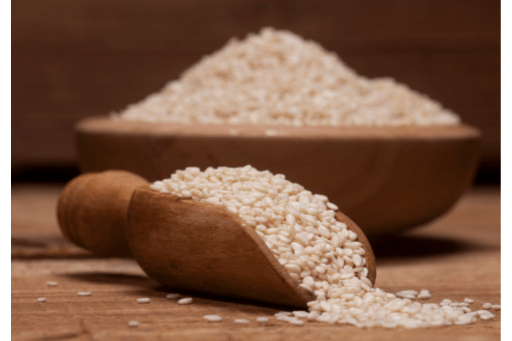
Sesame seeds are the tiny seeds that grow on the sesame plant. The seeds are a common ingredient in many different types of cuisine and are often used in sweets and desserts. They can be eaten as a snack and can also be used as a garnish on many different types of food.
These seeds are also used to make hair products like shampoos, conditioners, hair oils, etc.
Nutrition value:
| Nutrients | Quantity(100g) |
|---|---|
| Calories | 576 |
| Fat | 50g |
| Cholesterol | 0mg |
| Sodium | 1.12mg |
| Potassium | 486mg |
| Fiber | 14g |
| Protein | 17g |
Benefits of sesame seeds:
- Reduces the cholesterol
- Support healthy bones
- Lower blood pressure
- Helps in blood cell formation
Watermelon seeds
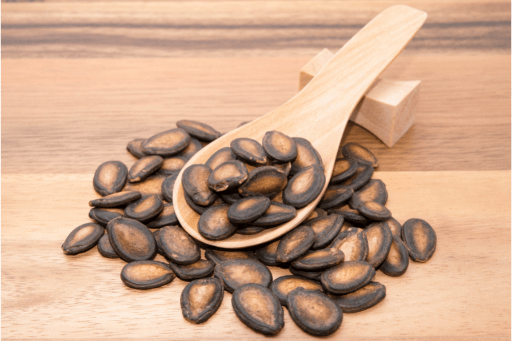
Many people often discard watermelon seeds after eating watermelon. The seeds are tiny but very rich in nutrients.
Seeds are widely used in many recipes like desserts, cakes, cookies, candies, etc. Also, the seeds have been used as a remedy for many health problems.
Nutrition value:
| Nutrients | Quantity(100g) |
|---|---|
| Calories | 557 |
| Fat | 47g |
| Sodium | 99mg |
| carbohydrates | 15g |
| Protein | 28g |
| Iron | 7.28mg |
Benefits of watermelon seeds:
- Promote weight loss
- Strengthen the bones
- Control the blood pressure
- May prevent risk of some cancer
- It prevents the outbreak of acne
Walnuts (Akhrot)

Walnuts are a rich source of calories among some of the other nuts or dry fruits available in the market. It is a very common nut in the world, which is grown from the walnut tree called Juglans Regia. There are approximately 15 species of walnut available in the world.
Walnuts have many benefits that make them a must-have in your diet. They are high in omega-3 fatty acids and folic acid, both of which are essential nutrients for pregnant women.
Also read: 10 Best Dry Fruits During Pregnancy For A Healthy Baby
Nutrition value:
| Nutrients | Quantity(100gm) |
|---|---|
| Calories | 654 |
| Fat | 66g |
| Carbohydrate | 13.5g |
| Fiber | 6.7g |
| Protein | 15g |
| Calcium | 98mg |
| Iron | 2.91mg |
Benefits of walnuts:
- Reduces the risk of some cancers
- Support weight control
- Manages blood pressure
Zante currant

The last dry fruit name in our list is zante currant.
It is a dried grape of the species Vitis vinifera and is also known as Corinthian raisins. It is the main ingredient to make currant jelly.
Zante Currant is a sweet and tangy dried fruit with a dark brownish red color originated from the small island of Zante in Greece. It has a very unique and slightly sour taste.
The currant’s flavor is similar to the raisin, though it is more tart, and the texture is firmer. It is used as a spice, as a snack, as a flour, as a flavoring, and as a garnish.
Nutrition value:
| Nutrients | Quantity(100g) |
|---|---|
| Calories | 283 |
| Fat | 0.27g |
| Protein | 4.1g |
| Fiber | 6.8g |
| Sodium | 8mg |
| Potassium | 892mg |
Benefits of zante currant:
- Good for the immune system
- Reduces the inflammation
- May help in treat glaucoma(the leading cause of blindness)
Final words
As you can see, all the dry fruits listed above are very healthy options for snacking or cooking. This is mainly because all these dry fruits are high in protein, healthy fats, fiber, vitamin and minerals.
I hope that you found this informative and I encourage you to include some of these dry fruits in your diet.
So, the next time you go for shopping, consider picking up some of the dry fruits listed in this post.
If you have any questions or think I missed your favorite dry fruit in the list, don’t hesitate to tell me in the comment section!

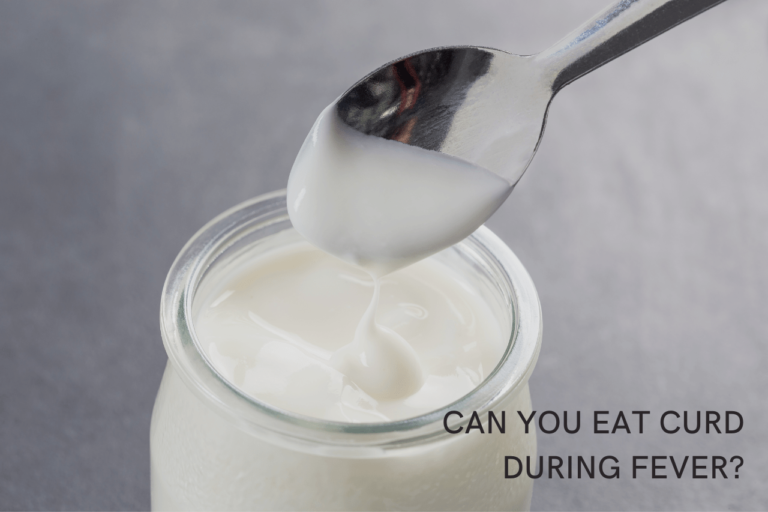
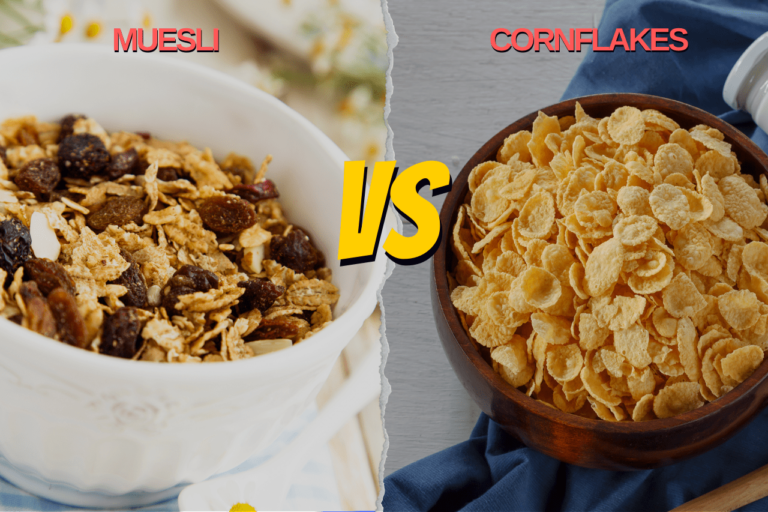
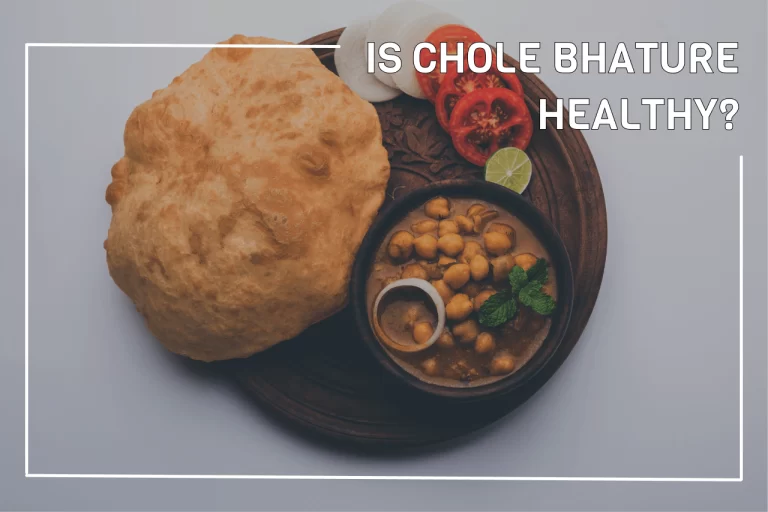


Thanks,
I am glad that you found this helpful
After going over a handful of the articles on your website, I truly appreciate your technique of blogging.
I book marked it to my bookmark site list and will be checking back soon.
Please check out my web site as well and tell me how you feel.
Hello, Gail. Thank you for your valuable feedback. This is extremely important to me.
I’ll definitely take a look at your website.
Best view i have ever seen !
Thanks w88, I appreciate your effort to provide feedback on this article